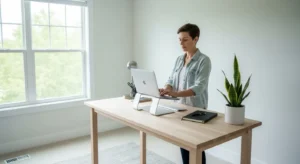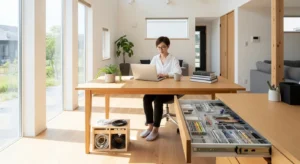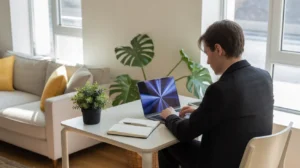
The mail arrives. You bring it inside, set it on the kitchen counter, and tell yourself you’ll deal with it later. A bill joins the pile. A school permission slip gets added. Soon, that small stack becomes a paper drift, a source of quiet, persistent stress. This is visual friction: the mental and emotional drag created by clutter. Every time you see that pile, your brain registers an unfinished task, draining a small amount of your focus and energy. It’s not a failure of willpower; it’s a failure of system. At TheFocusedMethod.com, we believe that a calm, organized environment is built on simple, sustainable habits, not on bursts of heroic effort. The key to conquering paper clutter for good isn’t a bigger filing cabinet or a more complex app; it’s a foundational principle called the One-Touch Rule.
The One-Touch Rule is elegantly simple: whenever you pick up a piece of paper, from mail to a business card, you make a decision and act on it immediately. You handle it just once before it moves to its final destination. This doesn’t mean you must pay a bill the moment you open it. It means the bill goes directly to your “To Pay” folder, the junk mail goes directly into the recycling bin, and the magazine goes directly to the coffee table. There is no in-between, no “I’ll-deal-with-this-later” pile. This single shift in behavior eliminates the decision fatigue that leads to piles and transforms your relationship with paperwork from one of avoidance to one of effortless management. This article will guide you through creating the simple systems—the environmental cues—that make the One-Touch Rule for paperwork not just possible, but natural. We will explore how to set up your space, establish quick routines, and finally achieve a low-maintenance system for organizing paper mail and all the other documents that flow into your life.
📚 Table of Contents
- Creating Your Paperwork Processing Zones
- The Daily Reset: Your 10-Minute Paperwork Taming Routine
- Strategies for Small and Shared Spaces
- Putting It All Together: Two Mini Makeovers
- Frequently Asked Questions About Paperwork Organization
- What do I do with my huge backlog of old paper?
- How can I get my family or partner to follow the system?
- What’s the one touch rule for sentimental items like cards or kids’ drawings?
- I have no space for files or a shredder. How can I adapt this?
- Your First Steps to a Clutter-Free System
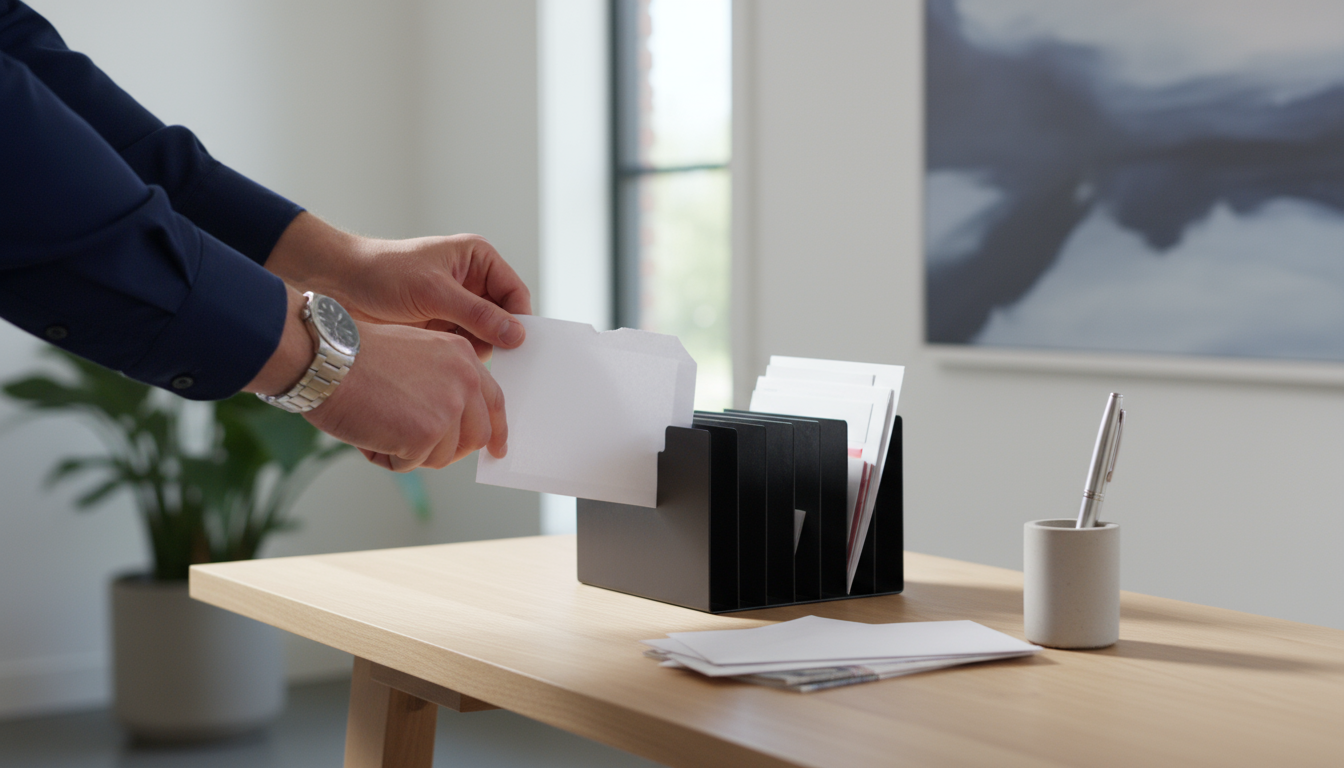
Creating Your Paperwork Processing Zones
Before you can effectively implement the one-touch rule, you need to create an environment that supports it. This means designing a clear, logical path for every piece of paper that enters your home. We call these designated areas your working zones. A working zone is a specific spot dedicated to a specific type of task, which removes the guesswork and decision-making from the process. You don’t need a large, dedicated office; these zones can be a small corner of a counter, a shelf, or a single drawer. The goal is to reduce the number of choices you have to make. When you know exactly where something goes, touching it once becomes second nature.
Your primary zone is the Landing Strip. This is the first place mail and other incoming papers land when they enter your home. It could be a simple tray by the door or a designated spot on your kitchen counter. Crucially, this is a temporary holding area, not a storage area. Its only purpose is to contain paper until you are ready to process it during your daily reset. Next to your Landing Strip, you should have your basic processing tools: a recycling bin, a shredder, and a pen. Having these items within arm’s reach is critical. If you have to walk to another room to shred a credit card offer, you are far more likely to just set it down on the counter, breaking the one-touch rule before you’ve even started.
From the Landing Strip, every piece of paper needs a clear, predetermined home. Forget complex filing systems with dozens of color-coded tabs. Start with a simple, label-light approach. You need three primary destinations. First, an Action folder or tray. This is for items that require a task, like bills to pay, forms to sign, or invitations to RSVP to. Second, a Reference file. This is for documents you need to keep but don’t need to act on, such as insurance policies, tax documents, or car titles. This can be a simple accordion file or a small filing box. Third, the Exit—the recycling bin or shredder. A surprisingly large percentage of mail and paperwork can be dealt with immediately by discarding it. By creating these simple, clearly defined zones for mail organization, you build a physical workflow. The paper moves from the Landing Strip through your hands to one of just a few possible homes. This physical pathway removes mental friction and makes the one-touch rule for paperwork an intuitive, automatic process.

The Daily Reset: Your 10-Minute Paperwork Taming Routine
A system is only as good as the routine that maintains it. The most effective way to manage the flow of paper is with a daily or, at minimum, a weekly “reset.” A reset point is a scheduled time you dedicate to bringing a system back to its baseline state. It’s not a deep clean or a major organizing project; it’s a quick, consistent tidying habit that prevents small messes from becoming overwhelming problems. For your paperwork, this means a 10-minute session to process everything in your Landing Strip. The key is to make it a non-negotiable part of your day, like brushing your teeth. Anchor it to an existing habit—perhaps right after you finish dinner or just before you shut down your computer for the day.
Here’s what your 10-minute reset looks like in practice. First, bring your Landing Strip tray to your processing station—the spot with your Action/Reference files and your shredder/recycling bin. Set a timer for 10 minutes. This creates a sense of gentle urgency and prevents the task from expanding to fill more time. One by one, pick up each piece of paper. This is where you apply the one-touch rule. As you handle each item, make a swift decision using the “D.A.F.T.” method: Discard, Act, File, or Transfer. Does it have personal information? Shred it. Is it junk mail? Recycle it. Does it require an action? If the action takes less than two minutes (like signing a permission slip or RSVPing online), do it immediately. If it takes longer (like paying a series of bills), place it in your Action folder. Does it need to be kept for your records? Put it in your Reference file. Does it belong to someone else in the household? Transfer it to their designated inbox.
This same reset principle applies to your digital files. Your computer’s desktop and your email inbox are the digital equivalents of a cluttered counter. Schedule a separate 10-minute reset for your digital life. Open your email and apply the one-touch rule: delete, archive, reply (if it takes under two minutes), or move to a “To-Do” folder. Drag stray files from your desktop into their proper folders. The consistency of this ritual is what builds momentum. After just one week of daily resets, you’ll notice that your 10-minute session becomes a 5-minute session. You’ll feel a sense of control and calm knowing that no piece of paper, physical or digital, can overwhelm you. This simple routine is the engine that powers your entire mail organization system, ensuring your surfaces stay clear and your mind stays focused.
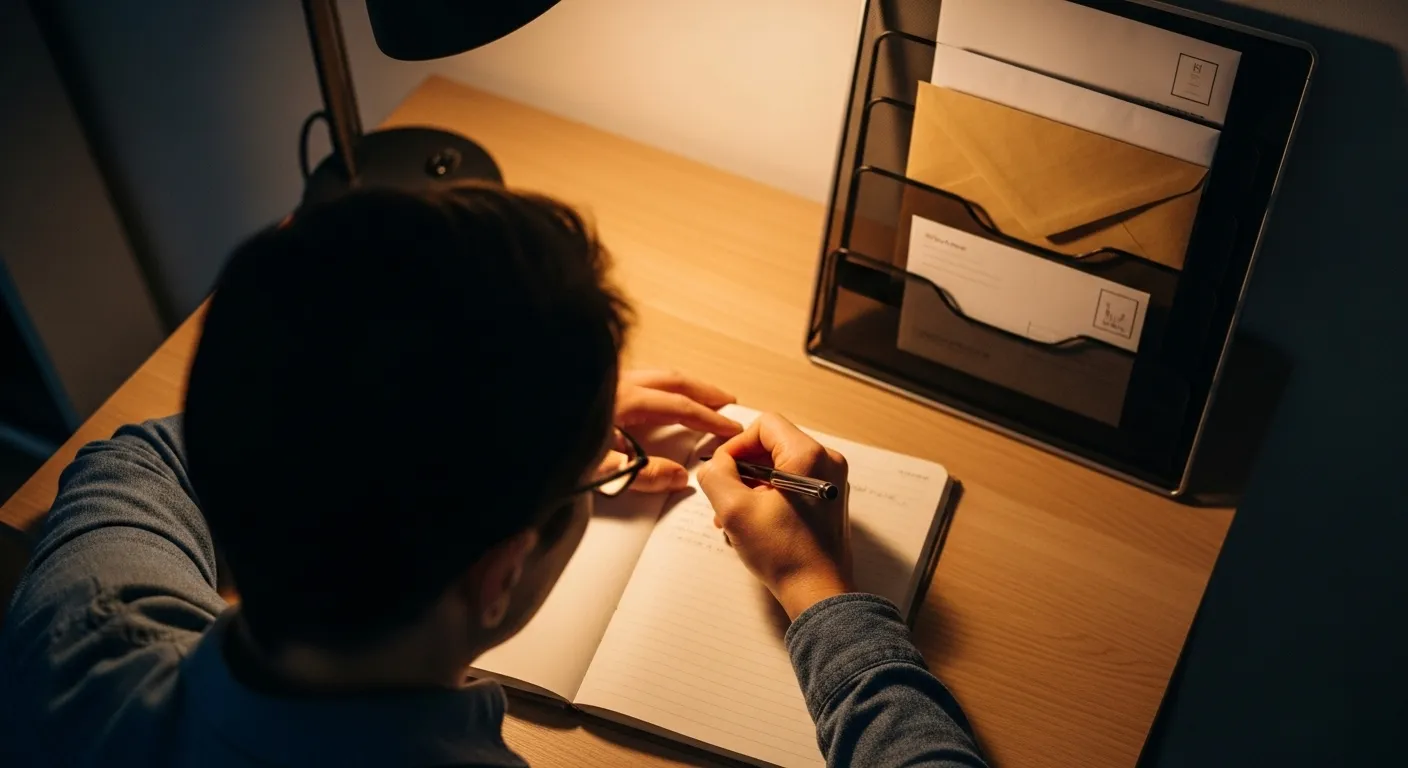
Strategies for Small and Shared Spaces
The principles of the one-touch rule and dedicated working zones are universal, but their application needs to adapt to your environment. You don’t need a sprawling home office to create an effective system for organizing paper mail. In fact, constraints can often lead to more creative and efficient solutions. If you live in a small apartment or a home with limited surface area, the key is to think vertically and multi-functionally. A cluttered countertop in a small kitchen feels ten times more stressful than in a large one, making a streamlined system even more crucial.
For small spaces, look for opportunities to use wall space. A wall-mounted mail sorter can serve as your Landing Strip and your Action folder, keeping your counters completely clear. A narrow, vertical filing cabinet can tuck into a small closet or an unused corner, providing ample storage for your Reference files without taking up a large footprint. A simple magazine file holder can sit on a bookshelf and act as your Action center. Low-cost storage solutions are your best friend here. An affordable accordion file from an office supply store can hold all your essential reference documents and be stored upright on a shelf or tucked away in a drawer. The goal is to give every piece of paper a home that is out of sight but still easily accessible. This reduces visual friction and makes your small space feel larger and more serene.
Shared spaces, whether with a partner, family, or roommates, introduce another layer of complexity. The success of any household system depends on buy-in from everyone involved. The best way to achieve this is to make the system as simple and intuitive as possible. Instead of one central Landing Strip that can become a messy free-for-all, consider giving each person their own small, designated inbox or tray. This creates individual accountability. At the end of the day, each person is responsible for processing their own tray using the one-touch rule. For shared documents like utility bills or notices from a landlord, the central Action folder remains the best solution. The key is to have a brief conversation to agree on the system. Frame it not as a list of rigid rules, but as a collective effort to create a more peaceful and functional home environment. When the system is clear, simple, and benefits everyone by reducing clutter, getting cooperation becomes much easier.
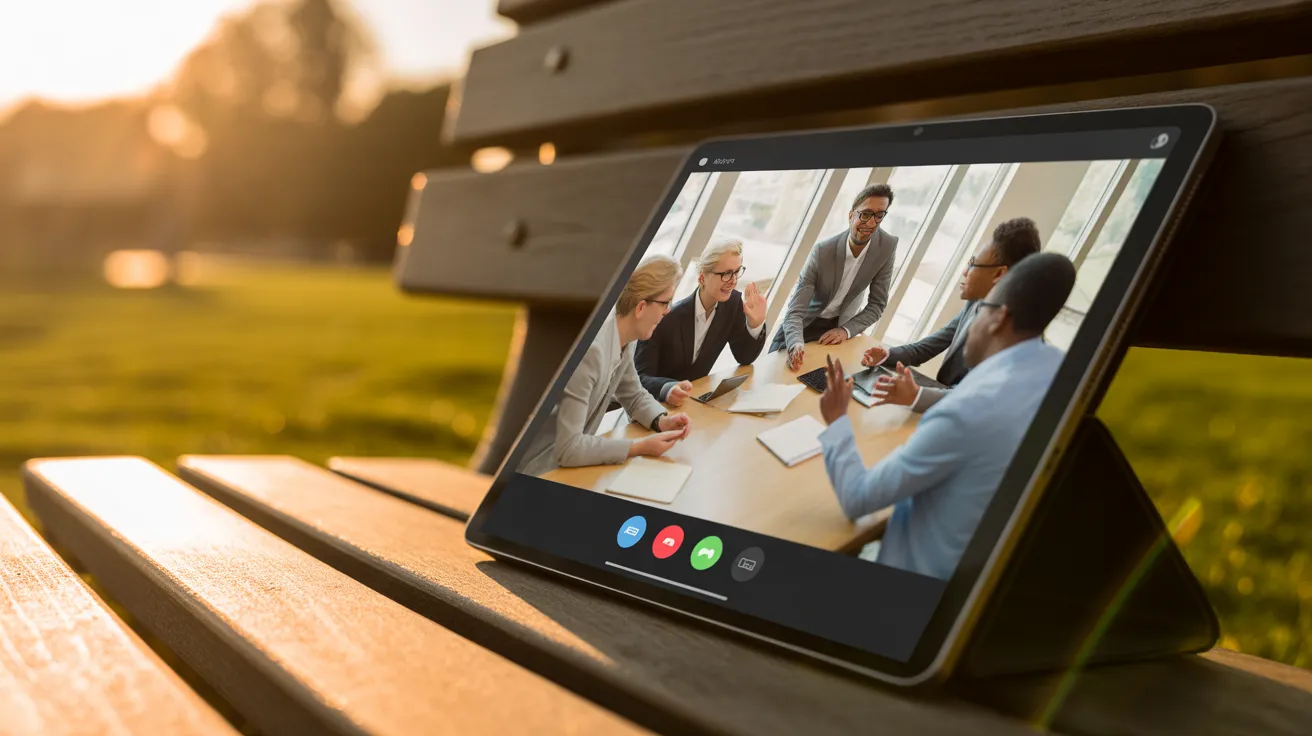
Putting It All Together: Two Mini Makeovers
Theory is helpful, but seeing how these systems work in real life is what makes them click. Let’s walk through two common paper-clutter hotspots—a home office desk and a kitchen command center—and apply the principles of zones, resets, and the one-touch rule for paperwork to transform them from chaotic to calm.
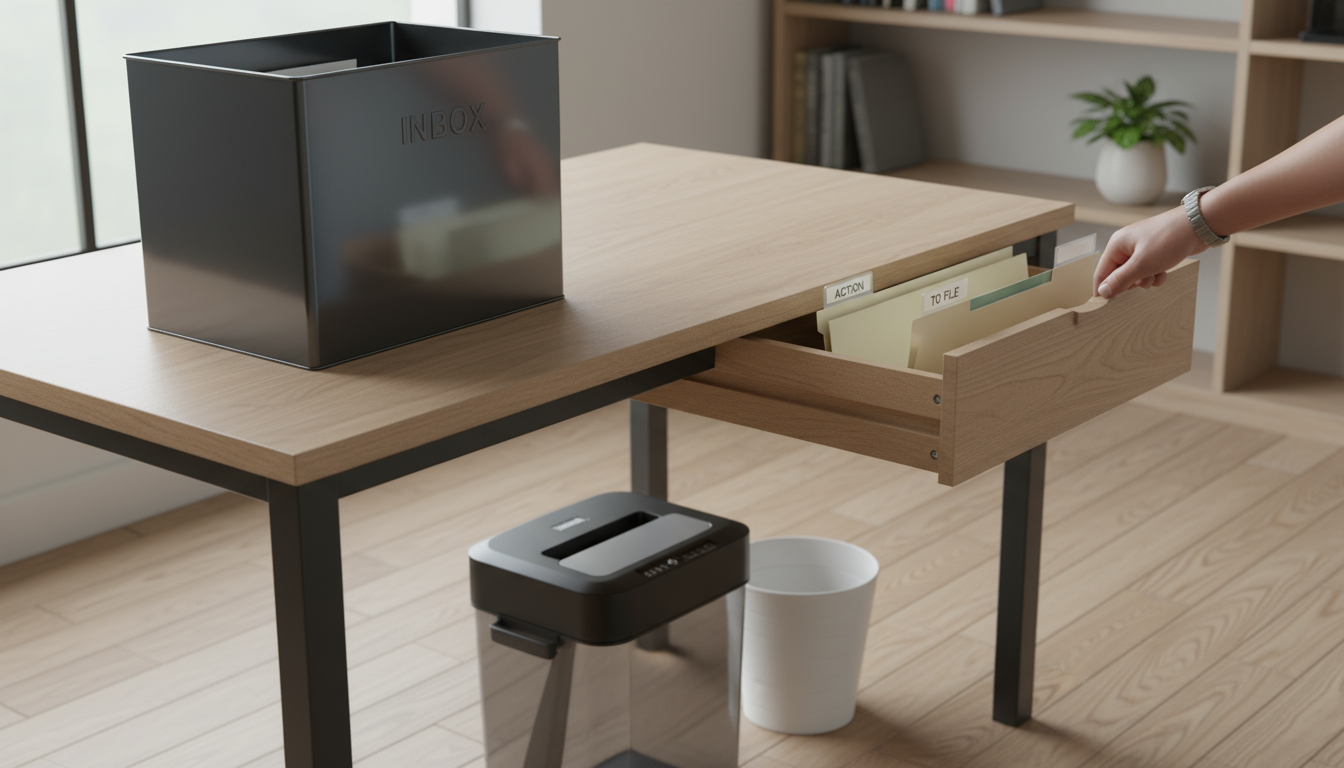
Mini Makeover 1: The Home Office Desk
Imagine a desk piled high with a mix of old reports, unpaid bills, new mail, and sticky notes. The visual friction is immense, making it hard to focus on work. The first step is to establish clear zones. We designate a small, vertical letter tray on the corner of the desk as the single “Inbox.” This is the new Landing Strip for any new paper that arrives. We then clear out a single desk drawer to house two simple hanging folders. One is labeled “Action” for bills and forms, and the other is “To File” for documents that will eventually go into the main reference filing cabinet. The recycling bin is moved from across the room to directly under the desk, and a small shredder is placed next to it. The system is now in place. The desk surface itself becomes a “work-only” zone. Now, when a new piece of mail arrives, the user picks it up once. They immediately open it. The junk mail and envelope go straight into the recycling. The bill inside goes directly into the “Action” folder in the drawer. A report they need to keep goes into the “To File” folder. The desk surface remains clear. The daily reset involves spending five minutes at the end of the workday to ensure the “Inbox” tray is empty, with every item processed into its proper home. The visual chaos is replaced by a clear, functional workspace.

Mini Makeover 2: The Kitchen Command Center
Now, picture the classic kitchen counter, buried under school flyers, coupons, takeout menus, and a week’s worth of mail. This area is often the default dumping ground for the entire family. To reclaim it, we create a compact “Command Center” on a small section of unused wall. We install a simple wall-mounted organizer that has a slot for incoming mail (the Landing Strip) and a separate slot for each family member. Below it, we place a small hook for keys and a magnetic board for truly urgent, time-sensitive items like a party invitation for this weekend. A recycling bin is tucked into the pantry nearby. When a family member comes home, they sort the mail immediately. Junk is recycled. Their personal mail goes into their slot. Shared bills go into the main “Incoming” slot, which is designated as the household “Action” folder. The parent responsible for bills knows to check only that one spot. During the nightly kitchen cleanup reset, one person takes 60 seconds to process anything left in the “Incoming” slot. School art is admired and then either put on the fridge or moved to a “keepsake” box in a closet. Coupons are placed in a small envelope in a kitchen drawer. The counter stays clear for its intended purpose: preparing food. This simple mail organization system transforms a cluttered, stressful surface into a functional and peaceful hub for the family.
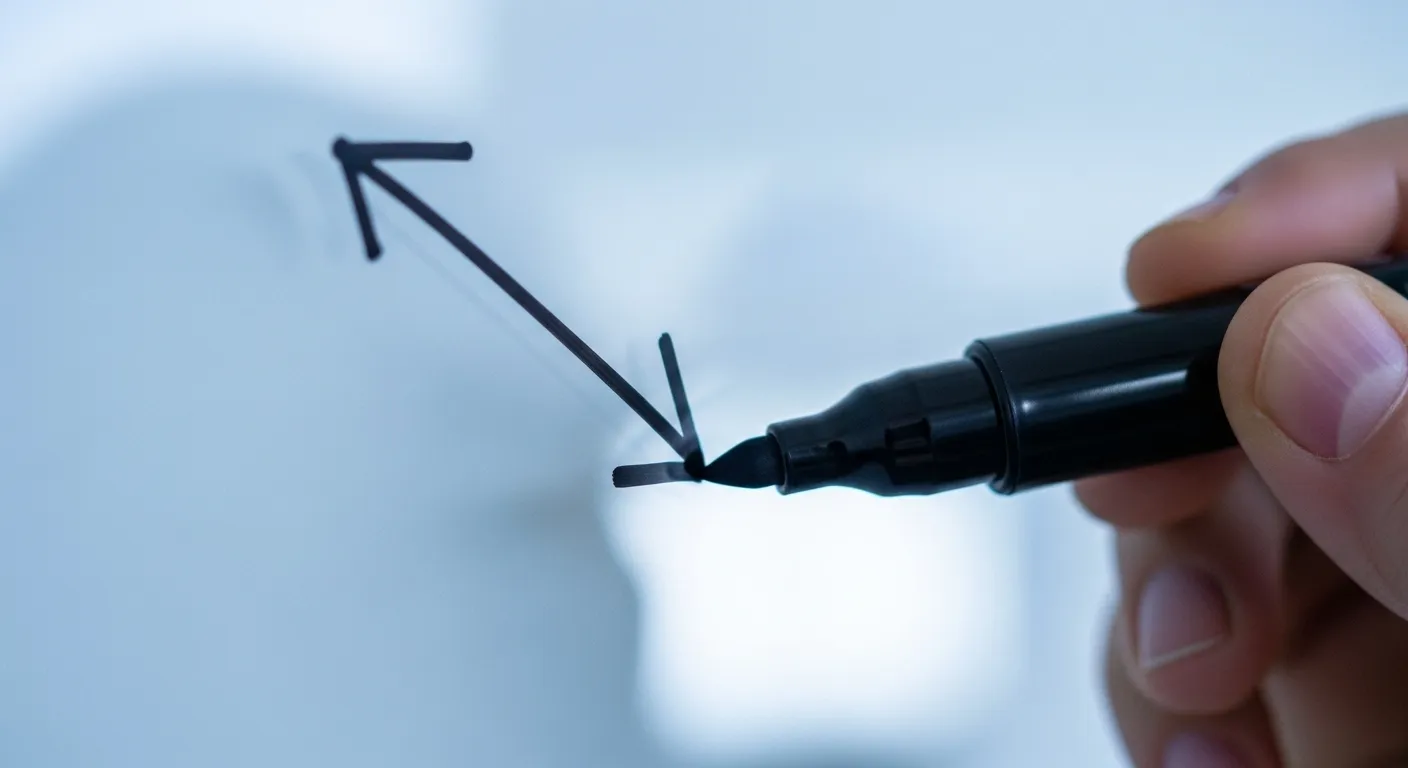
Frequently Asked Questions About Paperwork Organization
Even with a simple system like the one-touch rule, questions and challenges inevitably arise. Tackling old habits and unique situations is part of the process. Here are answers to some of the most common questions we hear about organizing paper mail and paperwork.
What do I do with my huge backlog of old paper?
The backlog is often the biggest source of intimidation. Do not try to tackle it all at once. And do not mix your old papers with your new system. Set up your new Landing Strip and Action/Reference zones for incoming paper first. Start practicing the one-touch rule with all new paper starting today. This immediately stops the pile from growing. For the backlog, schedule separate, dedicated sessions. Set a timer for 20-30 minutes once or twice a week to work through a small portion of the old pile. Use the same D.A.F.T. sorting method: Discard, Act, File, or Transfer. It may take a few weeks or even months, but by separating the task from your daily routine, you make it manageable and prevent overwhelm.
How can I get my family or partner to follow the system?
The key to family buy-in is to make the system incredibly simple and to focus on the shared benefits. Instead of dictating rules, have a collaborative conversation. Ask, “Wouldn’t it be nice if this counter was always clear? How can we make that happen?” Design the system together. Give everyone their own personal inbox, which respects their privacy and gives them ownership. Lead by example. When they see you consistently using the system and how much calmer the space feels, they are more likely to adopt the habits themselves. Avoid criticizing; instead, gently guide by saying, “Hey, I see this landed here. Does it go in your inbox?” Positive reinforcement works far better than policing.
What’s the one touch rule for sentimental items like cards or kids’ drawings?
Sentimental items are not administrative paperwork, and they deserve a different process. They should not live in your active filing system. The one-touch rule still applies, but the “home” is different. Designate a single, appropriately sized “Keepsake Box” for each member of the family. When a special card or drawing comes into the house, enjoy it. Display it on the fridge or a bulletin board for a set period—a week, a month, a season. When it’s time for it to come down, you touch it once more and make a decision. Is it a true treasure? If so, it goes directly into the Keepsake Box. If the initial joy has passed and it’s not a long-term keeper, you can take a photo of it for a digital album and then let the physical item go. This honors the memory without creating clutter.
I have no space for files or a shredder. How can I adapt this?
Creativity is key when space is tight. You don’t need a traditional filing cabinet. A simple, portable file box with a handle can hold all your essential reference documents and be stored in a closet, under a bed, or on a high shelf. For your Action items, a single magazine file holder or a clipboard hung on a wall can work perfectly. As for shredding, you don’t need a bulky machine. Many office supply stores like Staples or shipping centers offer secure shredding services for a small fee. You can keep a “To Shred” bag in a closet and take it in once every few months. The principles of the one-touch rule for paperwork remain the same, even if the tools are adapted to fit your space.
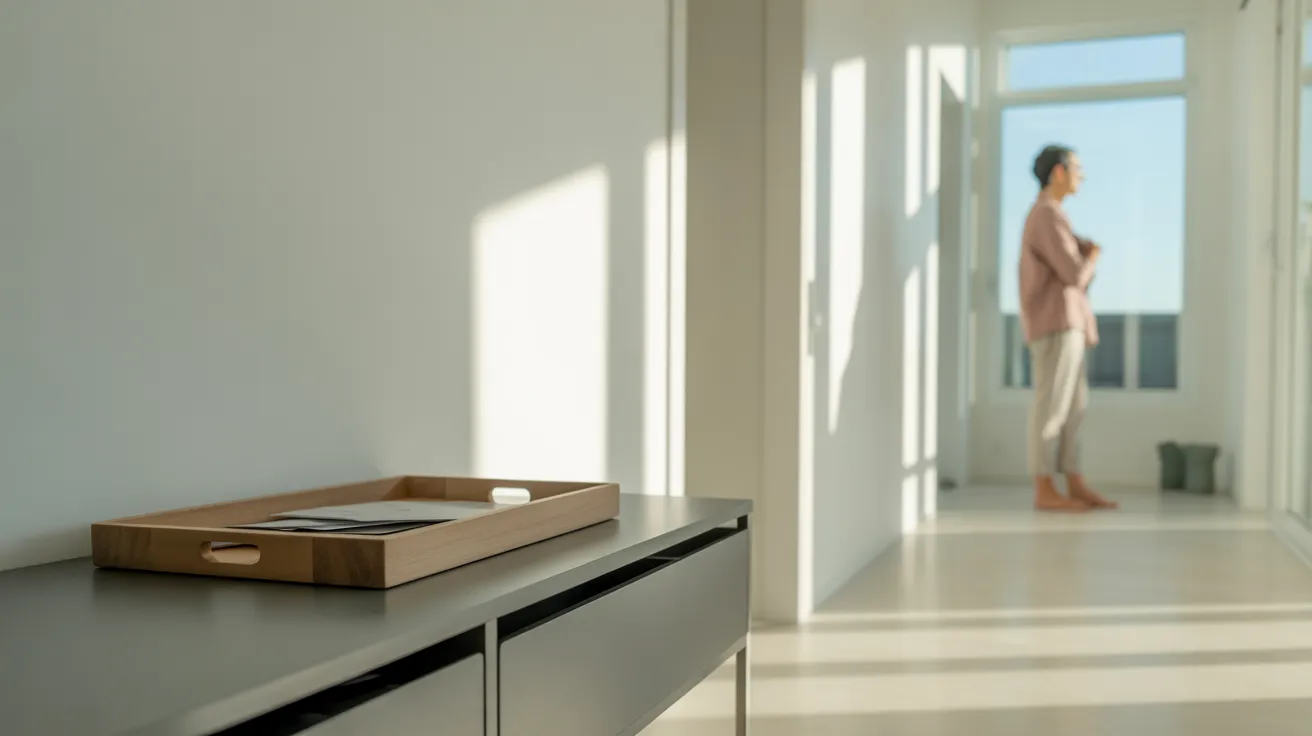
Your First Steps to a Clutter-Free System
We’ve covered the philosophy, the setup, and the practical application of the one-touch rule. The journey from paper chaos to systematic calm can feel daunting, but it begins with a few small, deliberate actions. The goal is not to achieve a perfectly organized home overnight, but to build a resilient, low-maintenance system that serves you for years to come. It’s about creating an environment where the right choice—the organized choice—is also the easiest choice. By reducing visual friction and establishing simple reset points, you reclaim your mental energy for the things that truly matter.
You can start this transformation this week. Don’t try to do everything at once. Instead, pick three simple resets to implement. First, define your Landing Strip. Choose one, and only one, spot in your home where all new mail and papers will live temporarily. It could be a simple basket, a tray, or even a designated corner of a counter. Communicate this to everyone in your household. Second, create your “Exits.” Place a recycling bin and a small “To Shred” box or bag right next to your new Landing Strip. Making it easy to discard things is the fastest way to reduce paper volume. Third, schedule your first 10-minute reset. Put it in your calendar for tomorrow. When the time comes, take everything from your Landing Strip, and handle each piece one time. Sort it into three simple piles: Recycle/Shred, Action, and Keep. Don’t worry about perfect filing yet; just get it sorted.
By taking these three small steps, you are laying the foundation for a powerful new habit. You are proving to yourself that managing paperwork doesn’t have to be a monumental task. It can be a series of small, mindful actions that, when practiced consistently, lead to a profound sense of order and peace in your home and in your mind. The one touch rule is more than just an organizing tactic; it’s a commitment to clarity, a way to tell yourself that you are in control of your space, not the other way around.
Disclaimer: The information provided in this article is for informational purposes only and does not constitute legal, financial, or professional advice. Please consult with a qualified professional for advice tailored to your specific situation, especially regarding document retention policies for tax or legal purposes. For official guidelines on tax records, you may refer to resources like the Internal Revenue Service.
For expert guidance on productivity and focus, visit American Psychological Association (APA), Society for Industrial and Organizational Psychology (SIOP) and Getting Things Done (GTD).



